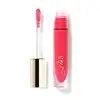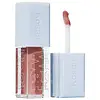What's inside
What's inside
 Key Ingredients
Key Ingredients

 Benefits
Benefits

 Concerns
Concerns

 Ingredients Side-by-side
Ingredients Side-by-side

Hydrogenated Polyisobutene
EmollientPolybutene
Octyldodecanol
EmollientEthylene/Propylene/Styrene Copolymer
Silica Dimethyl Silylate
EmollientAroma
Butylene/Ethylene/Styrene Copolymer
Caprylic/Capric Triglyceride
MaskingCaprylyl Glycol
EmollientCarthamus Tinctorius Seed Oil
MaskingCitrus Aurantium Dulcis Peel Oil
MaskingEthylhexylglycerin
Skin ConditioningHelianthus Annuus Extract
EmollientOpuntia Ficus-Indica Seed Oil
EmollientOryza Sativa Bran Extract
Skin ConditioningPentaerythrityl Tetra-Di-T-Butyl Hydroxyhydrocinnamate
AntioxidantPunica Granatum Fruit Extract
AntioxidantRosmarinus Officinalis Leaf Extract
AntimicrobialRubus Idaeus Seed Oil
EmollientSimmondsia Chinensis Seed Oil
EmollientTocopherol
AntioxidantTocopheryl Acetate
AntioxidantUndaria Pinnatifida Extract
Skin ConditioningVaccinium Corymbosum Seed Oil
AntioxidantCI 77491
Cosmetic ColorantCI 77492
Cosmetic ColorantCI 77499
Cosmetic ColorantCI 73360
Cosmetic ColorantCI 45380
Cosmetic ColorantCI 15850
Cosmetic ColorantCI 77891
Cosmetic ColorantCI 19140
Cosmetic ColorantHydrogenated Polyisobutene, Polybutene, Octyldodecanol, Ethylene/Propylene/Styrene Copolymer, Silica Dimethyl Silylate, Aroma, Butylene/Ethylene/Styrene Copolymer, Caprylic/Capric Triglyceride, Caprylyl Glycol, Carthamus Tinctorius Seed Oil, Citrus Aurantium Dulcis Peel Oil, Ethylhexylglycerin, Helianthus Annuus Extract, Opuntia Ficus-Indica Seed Oil, Oryza Sativa Bran Extract, Pentaerythrityl Tetra-Di-T-Butyl Hydroxyhydrocinnamate, Punica Granatum Fruit Extract, Rosmarinus Officinalis Leaf Extract, Rubus Idaeus Seed Oil, Simmondsia Chinensis Seed Oil, Tocopherol, Tocopheryl Acetate, Undaria Pinnatifida Extract, Vaccinium Corymbosum Seed Oil, CI 77491, CI 77492, CI 77499, CI 73360, CI 45380, CI 15850, CI 77891, CI 19140
Oleic/Linoleic/Linolenic Polyglycerides
EmollientBis-Diglyceryl Polyacyladipate-2
EmollientRicinus Communis Seed Oil
MaskingPolyhydroxystearic Acid
EmulsifyingCaprylic/Capric Triglyceride
MaskingButyrospermum Parkii Butter
Skin ConditioningPersea Gratissima Oil
Skin ConditioningMica
Cosmetic ColorantEthylhexyl Palmitate
EmollientOryza Sativa Bran Extract
Skin ConditioningSilica Dimethyl Silylate
EmollientOenothera Biennis Oil
EmollientCitrus Aurantium Dulcis Peel Oil
MaskingRosmarinus Officinalis Leaf Extract
AntimicrobialHelianthus Annuus Extract
EmollientPalmitoyl Tripeptide-1
Skin ConditioningSodium Hyaluronate
HumectantTocopherol
AntioxidantTribehenin
EmollientGlucomannan
Skin ConditioningLactic Acid
BufferingSorbitan Isostearate
EmulsifyingTrihydroxystearin
Skin ConditioningCaprylyl Glycol
EmollientEthylhexylglycerin
Skin ConditioningVanillin
MaskingLimonene
PerfumingLinalool
PerfumingCI 77891
Cosmetic ColorantCI 77491
Cosmetic ColorantCI 77492
Cosmetic ColorantCI 77499
Cosmetic ColorantCI 77742
Cosmetic ColorantOleic/Linoleic/Linolenic Polyglycerides, Bis-Diglyceryl Polyacyladipate-2, Ricinus Communis Seed Oil, Polyhydroxystearic Acid, Caprylic/Capric Triglyceride, Butyrospermum Parkii Butter, Persea Gratissima Oil, Mica, Ethylhexyl Palmitate, Oryza Sativa Bran Extract, Silica Dimethyl Silylate, Oenothera Biennis Oil, Citrus Aurantium Dulcis Peel Oil, Rosmarinus Officinalis Leaf Extract, Helianthus Annuus Extract, Palmitoyl Tripeptide-1, Sodium Hyaluronate, Tocopherol, Tribehenin, Glucomannan, Lactic Acid, Sorbitan Isostearate, Trihydroxystearin, Caprylyl Glycol, Ethylhexylglycerin, Vanillin, Limonene, Linalool, CI 77891, CI 77491, CI 77492, CI 77499, CI 77742
Ingredients Explained
These ingredients are found in both products.
Ingredients higher up in an ingredient list are typically present in a larger amount.
This ingredient is an emollient, solvent, and texture enhancer. It is considered a skin-softener by helping the skin prevent moisture loss.
It helps thicken a product's formula and makes it easier to spread by dissolving clumping compounds.
Caprylic Triglyceride is made by combining glycerin with coconut oil, forming a clear liquid.
While there is an assumption Caprylic Triglyceride can clog pores due to it being derived from coconut oil, there is no research supporting this.
Learn more about Caprylic/Capric TriglycerideCaprylyl Glycol is a humectant and emollient, meaning it attracts and preserves moisture.
It is a common ingredient in many products, especially those designed to hydrate skin. The primary benefits are retaining moisture, skin softening, and promoting a healthy skin barrier.
Though Caprylyl Glycol is an alcohol derived from fatty acids, it is not the kind that can dry out skin.
This ingredient is also used as a preservative to extend the life of products. It has slight antimicrobial properties.
Learn more about Caprylyl GlycolCi 77491 is also hydrated iron III oxide. It's sole purpose is to give a red/pink hue to products.
Iron III oxides are classified as inorganic chemicals for coloring.
Synthetically created Ci 77491 is considered safer than those naturally found. This is because the synthetically created version may contain less impurities. Iron oxides are generally non-toxic and non-allergenic.
Learn more about CI 77491Ci 77492 is also hydrated iron III oxide. It's sole purpose is to give a yellow hue to products.
Iron III oxides are classified as inorganic chemicals for coloring.
Synthetically created Ci 77492 is considered safer than those naturally found. This is because the synthetically created version may contain less impurities. Iron oxides are generally non-toxic and non-allergenic.
Learn more about CI 77492Ci 77499 is also hydrated iron III oxide. It is created from mixing red and black iron oxides. This helps give shades of darkness to a product.
Iron III oxides are classified as inorganic chemicals for coloring.
Ci 77891 is a white pigment from Titanium dioxide. It is naturally found in minerals such as rutile and ilmenite.
It's main function is to add a white color to cosmetics. It can also be mixed with other colors to create different shades.
Ci 77891 is commonly found in sunscreens due to its ability to block UV rays.
Learn more about CI 77891Citrus Aurantium Dulcis Peel Oil is oil from the peel of an orange fruit.
Limonene and linalool make up the majority of oils from citrus peels. Limonene has a "citrus" fragrance. Citrus peels also contain flavonoids, which have anti-inflammatory properties.
Citrus peel is also a rich source of flavonoids. Flavonoids are natural antioxidants and help protect your skin against damage. Flavonoids are a group of compounds naturally found in vegetables and fruits.
The term 'fragrance' is not regulated in many countries. In many cases, it is up to the brand to define this term. For instance, many brands choose to label themselves as "fragrance-free" because they are not using synthetic fragrances. However, their products may still contain ingredients such as essential oils that are considered a fragrance.
Learn more about Citrus Aurantium Dulcis Peel OilEthylhexylglycerin (we can't pronounce this either) is commonly used as a preservative and skin softener. It is derived from glyceryl.
You might see Ethylhexylglycerin often paired with other preservatives such as phenoxyethanol. Ethylhexylglycerin has been found to increase the effectiveness of these other preservatives.
Helianthus Annuus Extract comes from the common sunflower.
Sunflowers are rich in vitamin E. Studies show sunflowers contain antimicrobial and antioxidant properties.
The fatty acids found in sunflowers include (from highest amount to least): linoleic acid, myristic acid, palmitic acid, stearic acid, arachidic acid, oleic acid, and linolenic acid.
These fatty acids hydrate your skin. Emollients create a film on the skin to prevent moisture from escaping.
Learn more about Helianthus Annuus ExtractOryza Sativa Bran Extract comes from the outer layer of a rice kernel. It is a byproduct of milling rice, or the operation to produce a whole grain rice product.
This ingredient has moisturizing properties due to its components of polysaccharides and omega-3 fatty acids. It also contains calcium, selenium, phosphorus, iron, and zinc.
Oryza Sativa Bran Extract contains numerous antioxidants such as ferulic acid. Antioxidants help fight free-radical molecules. Free-radical molecules are capable of damaging our cells and other genetic material.
Learn more about Oryza Sativa Bran ExtractRosmarinus Officinalis Leaf Extract comes from rosemary. Rosemary is native to the Mediterranean.
While Rosmarinus Officinalis Leaf Oil can be volatile due to its fragrant properties, the fragrance components are usually removed in the leaf extract.
Rosemary Leaf Extract contains many antioxidants such as rosmarinic acid and caffeic acid. Rosemarinic acid, a compound found in rosemary leaf, has been found to help soothe skin conditions such as eczema and acne.
Learn more about Rosmarinus Officinalis Leaf ExtractThis silica is mainly used to thicken oils and suspend particles in oils. It is not water soluble.
According to the manufacturer, it:
The manufacturer also claims this ingredient to be useful in makeup.
In lipstick formulations, this ingredient improves color payoff, reduces pigment settling, and reduces oil bleeding. This ingredient also improves the grip of powder products such as dry shampoos.
Learn more about Silica Dimethyl SilylateTocopherol (also known as Vitamin E) is a common antioxidant used to help protect the skin from free-radicals and strengthen the skin barrier. It's also fat soluble - this means our skin is great at absorbing it.
Vitamin E also helps keep your natural skin lipids healthy. Your lipid skin barrier naturally consists of lipids, ceramides, and fatty acids. Vitamin E offers extra protection for your skin’s lipid barrier, keeping your skin healthy and nourished.
Another benefit is a bit of UV protection. Vitamin E helps reduce the damage caused by UVB rays. (It should not replace your sunscreen). Combining it with Vitamin C can decrease sunburned cells and hyperpigmentation after UV exposure.
You might have noticed Vitamin E + C often paired together. This is because it is great at stabilizing Vitamin C. Using the two together helps increase the effectiveness of both ingredients.
There are often claims that Vitamin E can reduce/prevent scarring, but these claims haven't been confirmed by scientific research.
Learn more about Tocopherol